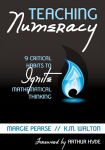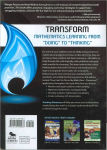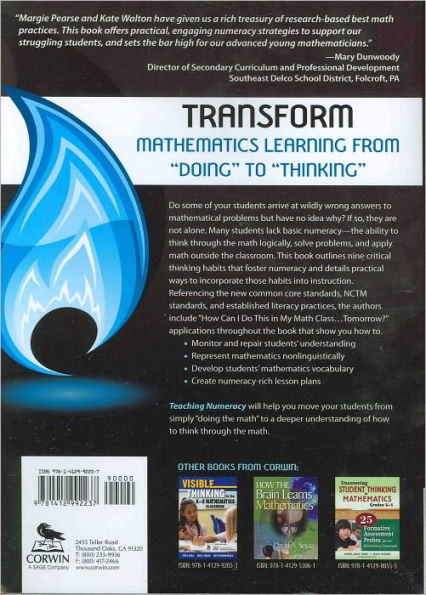American students are losing ground in the global mathematical environment. What many of them lack is numeracy—the ability to think through the math and apply it outside of the classroom. Referencing the new common core and NCTM standards, the authors outline nine critical thinking habits that foster numeracy and show you how to:
• Monitor and repair students’ understanding
• Guide students to recognize patterns
• Encourage questioning for understanding
• Develop students’ mathematics vocabulary
Included are several numeracy-rich lesson plans, complete with clear directions and student handouts.
American students are losing ground in the global mathematical environment. What many of them lack is numeracy—the ability to think through the math and apply it outside of the classroom. Referencing the new common core and NCTM standards, the authors outline nine critical thinking habits that foster numeracy and show you how to:
• Monitor and repair students’ understanding
• Guide students to recognize patterns
• Encourage questioning for understanding
• Develop students’ mathematics vocabulary
Included are several numeracy-rich lesson plans, complete with clear directions and student handouts.

Teaching Numeracy: 9 Critical Habits to Ignite Mathematical Thinking
240
Teaching Numeracy: 9 Critical Habits to Ignite Mathematical Thinking
240Related collections and offers

Product Details
| ISBN-13: | 9781412992237 |
|---|---|
| Publisher: | SAGE Publications |
| Publication date: | 03/23/2011 |
| Pages: | 240 |
| Product dimensions: | 6.90(w) x 9.90(h) x 0.60(d) |



